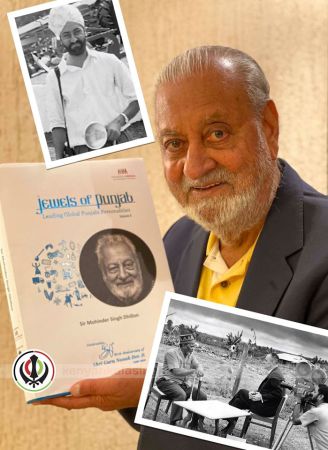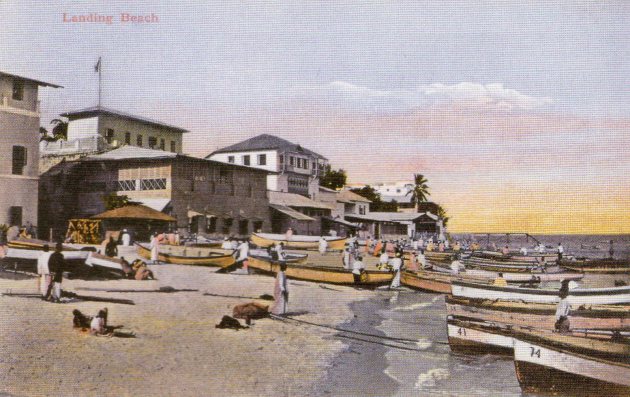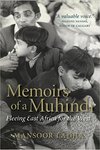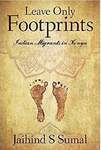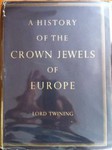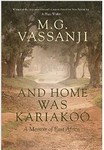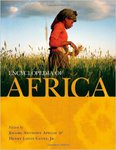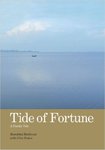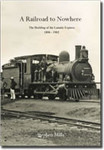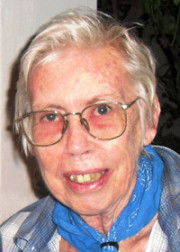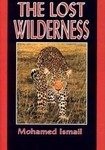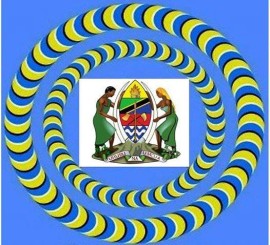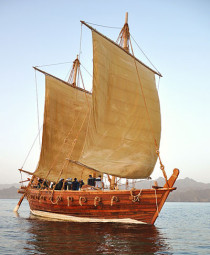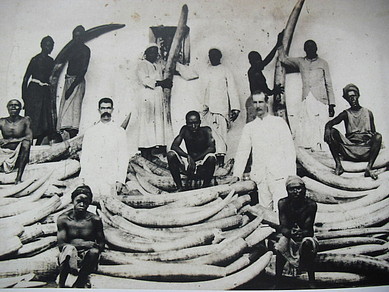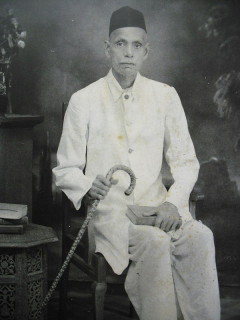Ajit Singh
The book reflects a signal lack of insight into the cultures and social milieus of the persons taken to represent different perspectives on urban life. Eric Dutton, a middle ranking colonial servant who influenced urban planning in the region, is used to represent the `colonial elite’. Ajit Singh Hoogan, a Punjab-born architect and planner who worked in Zanzibar and Malawi, is used to represent the perspective of ‘Asians’.
This is an ambitious attempt to compare colonial and post-colonial urban planning and its effects in Nairobi (Kenya), Lusaka (Zambia), Zanzibar, and Lilongwe (Malawi). Myers’ takes his cue from Timothy Mitchell’s book Colonizing Egypt (1988, Cambridge University Press) which argued that colonial planning sought to `enframe’ colonial subjects via a process of “codification and maintenance of a visible hierarchy of spatial order, of container and contained” (p. xii). Thus the central theme is the role and ideas expressed in British town planning which utilized three strategies to enframe urban spatial, social and political order where none was perceived to exist by: (a) making a segmented plan to replace Africa disorder; (b) creating distinctions between ‘inside’ and ‘outside’ at various spatial scales; and (c) objectifying space through the provision of points of observation and places of surveillance.
The book reflects a signal lack of insight into the cultures and social milieus of the persons taken to represent different perspectives on urban life. Eric Dutton, a middle ranking colonial servant who influenced urban planning in the region, is used to represent the `colonial elite’. Ajit Singh Hoogan, a Punjab-born architect and planner who worked in Zanzibar and Malawi, is used to represent the perspective of ‘Asians’. Finally, urban African voices are drawn from a variety of sources. Lest I be misunderstood, the idea of understanding different views on urban life is interesting, but the objective of regional comparison cannot be achieved by focusing on individuals.
First there is the choice of cases for comparative study. For example, the apparent uniqueness of Zanzibar would quickly have been dispelled had mainland Tanzania been included as a case study since both shared many urban policy concerns and planning problems in common (e.g. the role of H.V. Lanchester in defining town plans; security concerns involved in planning ‘African locations’; efforts to create town councils in African townships, etc). More importantly, Myers’ needed to address the wider political context including the role of the Colonial Office and of the Legislative Councils, etc who ensured that during the interwar period territorial finance was used to support the British economy; only in the immediate run up to independence were resources `found’ for development projects. In short, there was limited political support for any form of development (not just urban planning) and, in any case, planners were not autonomous actors. A greater awareness of such factors would help explain why in all the cases cited by Myers, urban development suffered from the withdrawal of funding and/or incomplete implementation.
A second problem stems from a focus on planning and architecture that has the effect of making the states’ production of urban ‘space’ the most issue, whereas what is really interesting is the way that people have created urban areas and reshaped, used and given meaning to it. For example, Myers’ notes that the individuals who subsequently led the 1964 revolution in Zanzibar ‘liked the civic center’ in Ngambo so much that they made it the headquarters of the revolution. Are we to believe that this had something to do with the uniqueness of architectural design? I think not. The reason for citing party headquarters in Ngambo comes from the fact that Zanzibar was deeply divided along racial lines, and that as the area zoned for Africans Ngambo was where the (African) revolutionaries lived and where they formed key political alliances.
At a more fundamental level, too little thought has been given to understanding the history of British town planning with its basis in 19th century concerns with public health and hygiene – linked closely with upper class attitudes about the threat posed by an emergent working class – the ‘garden city’ movement, and colonial conceptions of disease all of which fed into decisions about the location of African cities and social and racial segregation. Furthermore, Myers has failed to acknowledge the spatiality of regional underdevelopment with its clear hierarchy based on distinctions between European towns (the capital cities), small administrative centers, and African labor reserves. It is not the case that planning collapsed because of its segmented nature, etc but that forms of planning which fail to address wider regional inequalities will inevitably collapse in the face of mounting economic, social and political contradictions.
School of Oriental and African Studies, London ..... Garth Andrew Myers.
Zanzibar
Click on Photo
Zanzibar (/ˈzænzɨbɑr/; from Arabic: زنجبار Zanjibār, from Persian: زنگبار Zangibār "Coast of Blacks"; zangi [black-skinned] + bār [coast])[3][4] is a semi-autonomous part of Tanzania, in East Africa. It is composed of the Zanzibar Archipelago in the Indian Ocean, 25–50 kilometres (16–31 mi) off the coast of the mainland, and consists of numerous small islands and two large ones: Unguja (the main island, referred to informally as Zanzibar), and Pemba.
http://en.wikipedia.org/wiki/Zanzibar
Western Indian Ocean History
https://www.facebook.com/pages/Western-Indian-Ocean-History/256757291010950
__________________________________________________________
Beatrice Nicolini
(Researcher of History and Institutions of African and Asian Countries
Faculty of Political Science – Catholic University of the Sacred Heart– Milan)
ZANZIBAR AND EAST AFRICA
INTERRELIGIOUS AND INTERCULTURAL RELATIONS THROUGHOUT HISTORY
The aim of this short note is focusing on the role played by religion and its influence, both
numerous and complex, on Zanzibar Island and on the Subsaharan East African littorals throughout history with special reference to the nineteenth century.
Due to the wide and extremely complex subject, I would like to concentrate on Zanzibar, Unguja in kiswahili, as a case study, as I consider to be one of the most interesting and fascinating
islands of the Western Indian Ocean.
From time immemorial, the spread of Islam through short as well as long-distance trade routes strongly influenced, and in many cases modified, East African societies. Islam undoubtedly made a
tremendous impact upon the people of East Africa and of Zanzibar. Along the centuries, due to an increasing number of merchants, travellers and immigrants coming from southern Yemen, from Hadramawt
and from other non Shiite areas, a solid Sunni-Shafi’i community emerged(1).
Along the littorals of East Africa the impact of Islam with pre-existing religious realities, mostly animism, was inevitably a shock for the latter ones. The growing predominance of Islamic trade and
exercise of power politics in East Africa led to a misconception of the delicate, as well as of the troublesome, relationships between different societies and cultures. And the process was getting
deeper and deeper within both Islamic and non-Islamic societies, especially western societies. So much so that Chabal still thinks today about East Africans:
Cont: http://www.giovanniarmillotta.it/metodo/nicolini.html
Zanzibar
Near the turn of the last century Stone Town was a bustling port, a trading centre, a supply and communication hub and a true International City. Travellers from many lands passed through Zanzibar and like modern tourists, many wanted to keep a record of the sights they had seen.
Cameras were large and complex in those days, hard to maintain and transport. But Zanzibar was fortunate to have intelligent citizens and business interests with enough foresight and skill to risk importing a number of these new-fangled cameras to the Islands. They were at once set up to photograph important events, buildings and sometimes local "colour" in order to sell pictures to an eager public. We are fortunate that many of these early photos were later made into post cards which survive to this day to give us a glimpse of the past.
Cont: http://zanzibarhistory.org/zanzibar_photographers.htm
-----------------------------------------------------------------------------------------------------------------
Oman and Zanzibar
Only once in its history has Zanzibar had a leader rule for more than 25 years. There has only been one Zanzibar Silver Jubilee.
That of: Seyyid Khalifa bin Haroub bin Thuweini bin Said bin Sultan.
http://zanzibarhistory.org/oman_and_zanzibar.htm
History of the Oman and Zanzibar Sultanate
http://realhistoryww.com/world_history/ancient/Misc/True_Negros/Assorted/Oman_Zanzibar_Sultanate.htm
Welcome to Real History World Wide
http://realhistoryww.com/index.htm
Western Indian Ocean History
African Books Collective
Buy African-published books online here for immediate shipping worldwide. Your one-stop shop for African books, African writers and African scholarship. African Books Collective is a non profit distribution collective owned by publishers on the continent.
http://www.africanbookscollective.com/books/liberating-minds-restoring-kenyan-history
Kenya's legendary international photojournalist Mohinder Dhillon (b.1932) gets honoured and recognised to be featured in the book 'Jewels of Punjab' (2019) as an iconic filmmaker and author.
Click above to order your copy
Tippu Tip Facts
Tippu Tip Facts
Tippu Tip (ca. 1840-1905), or Hamed bin Mohammed bin Juma bin Rajab el Murjebi a Swahili, was a Zanzibari trader who extended his influence into the Congo region and much of East Africa.
His mother, Bint Habib bin Bushir, was a Muscat Arab of the ruling class. His father and paternal grandfather were coastal Swahili who had taken part in the earliest trading expeditions to the interior. His paternal great-grandmother, wife of Rajab bin Mohammed bin Said el Murgebi, was the daughter of Juma bin Mohammed el Nebhani, a member of a respected Muscat (Oman) family, and a Bantu woman from the village of Mbwa Maji, a small village south of what would later become the German capital of Dar es Salaam
Hamed bin Mohammed el Murjebi was born into a Zanzibar merchant dynasty at a time when trading routes from that East African metropolis were beginning to reach into the area which today forms the Republic of Zaïre. His first expedition around the southern tip of Lake Tanganyika into northern Katanga took place in 1859-1860 and was followed by two more campaigns along the same route (which he preferred to the more commonly traveled route via Tabora and Ujiji) in 1865 and 1867-1869. It was during the course of his third expedition that he gained the nickname of Tippu Tip, an onomatopoeic imitation of his firearms, and befriended the British missionary and explorer David Livingstone.
http://biography.yourdictionary.com/tippu-tip
Zanzibar with Coutinho Bros.
The Coutinho brothers established perhaps the first commercial photographic firm in East Africa. They had a studio in Zanzibar and then later also one in Dar es Salaam. In the 1890's J.B. Coutinhohad a brief partnership with A.C. Gomes.
http://zanzibarhistory.org/Countnho_photo_gallery.htm
Zanzibar
http://www.omanisilver.com/contents/en-us/d125.html
Zanzibar, Vintage Post cards, click below
http://www.oldeastafricapostcards.com/?page_id=8
Historic Collections of Photos
http://www.omanisilver.com/contents/en-us/d125.html
Historic Zanzibar
http://indian-ocean.africa.si.edu/
Namaskar-Africana
A Selected Bibliography Asian African Writing
http://www.asianafricanheritage.com/aahtbibliography.pdf
Swahili Chronicles Paperback –
December 16, 2015
by Mark Walker (Author, Photographer)
Mark Walker is a teller of stories, a poet, writer and photographer. His first book, "Swahili Chronicles", describes a journey of 5,000 kilometers taken through Tanzania exclusively using public
transport. Told through diary entries, poems and photographs, Mark shares the characters he encounters and the many chance incidents that weave a fantastic tale – sometimes gritty, sometimes warm and
uplifting, but always endearing.
http://www.gardenbenchpublishing.com/swahili_chronicles/swahili_chronicles_preview.pdf
https://www.amazon.com/Swahili-Chronicles-Mark-Walker/dp/1514219344
Michèle Mouton French former rally driver with Tim Davis looking at his book on the History of the Safari
A COLOURFUL LOOK BACK AT THE SAFARI RALLY
This book is not just another historical look back at the Safari, but it’s one that covers everything involved with
the event from the cars, drivers & navigators, the weather, controllers, statistics and more - basically a complete all-rounder.
INTERESTED....
Please contact me at..... davis.tim52@gmail.com
On Call in Africa, in War and Peace, 1910-1932
Welcome to the website for On Call in Africa, in War and Peace, 1910-1932.
The book contains the story and eye-witness account of events based on the personal diary, memoirs and extensive photography of Dr Norman Parsons Jewell who served as a Medical Officer throughout the first world war in East Africa, as well as a Doctor and Administrator in the UK colonial service in Seychelles (pre-war) and Kenya (post-war).
Jambo, Samji Kala! : The Life and Times of Mohanlal Kala Savani a Pioneer Who Introduced Bollywood to the World Kindle Edition
Despite it being a foreign land filled with uncertainty, thousands of Indians migrated to East Africa in the late 1800s to early 1900s in order to find jobs or to trade. One such migrant was Mohanlal Kala Savani. Manu Savani, the youngest son of Mohanlal Kala Savani, shares the history of a hard-working and successful Indian migrant in East Africa through a series of vividly written vignettes, enhanced by a gallery of personal photographs. JAMBO, SAMJI KALA! offers readers a glimpse of the socio political history of East Africa from 1918 onwards through the story of an ambitious man who landed at the port of Mombasa with a rudimentary elementary school education and empty pockets. Mohanlal Kala Savani was an aspiring young immigrant who worked with focus, resolve and a dauntless spirit to succeed in the world of business. …
https://www.amazon.co.uk/Jambo-Samji-Kala-Savani-Introduced-ebook/dp/B09X6715SQ
Lalji's Nairobi by Nitin Nanji
British Gujarat, 1905.
Despairing of the social injustices and crippling taxes under the British Raj, Lalji, 19, flees to British East Africa hoping to build a better life using his natural business skills and acumen. But
he soon finds unexpected dangers in his new home- turbulent politics and war with German East Africa- as well as some surprising opportunities. A combination of luck, coincidence, and his flair for
commerce lead to early success. Then, just as he is at his most vulnerable, a new threat emerges from where he least expects: from within his own family. Can Lalji beat overwhelming odds to fulfil
his hopes and ambitions?
A Passage to Kenya (2017) by John Lawrence Nazareth
John Lawrence Nazareth was educated at the University of Cambridge (Trinity College) and the University of California at Berkeley. He is a mathematical and algorithmic scientist, and university professor. He makes his home on Bainbridge Island near Seattle Washington.
Mr Muzzafar Khan, Author,Monsieur Adam, Zarina Patel with Zahid Rajan and Harsita Waters.
A new book titled INDIAN AFRICA, Minorities of Indian-Pakistani origin in East Africa, Edited by Michel Adam was launched at the residence of the French Ambassador on Thursday night 02 nd March 2017. Several writers and other dignitaries were invited for the book launch. Guests were treated to some of the best French wines and local Swahili cuisine.
Kenya-born Sultan Somjee
is a Canada-based ethnographer and writer. He studied product design but soon his interest shifted from designing products to what stories were told in products – about people’s lives and how they reflected on the individuals, their families, ethnic and faith groups and in general on the human society. He pursued his interests through his MA and PhD, studying art and material culture…….continued… .https://kitaab.org/2013/09/08/sultan-somjee-i-think-of-my-novel-as-an-ethnographic-fiction/
Click on photo
The Beggar's Dance by Farida Somjee
Biography
Farida Somjee was born in Mbeya, Tanzania. She grew up in the coastal city of Dar es Salaam. Many of her childhood memories resonate with her and come across in her writing. She
moved to Canada in her late teens with twenty dollars in her pocket, a lot of dreams and God on her side.
She lives in Vancouver, British Columbia, with her husband and son. The Beggar’s Dance is her first novel. She moved to Canada in her late teens with twenty dollars in her pocket, a lot of dreams and God on her side.
She lives in Vancouver, British Columbia, with her husband and son. The Beggar’s Dance is her first novel..........
Click on photo
Life Actually - My Memoirs
Nargis-Gercke-Bhatia
Who knew the eyes of a young girl from the East coast of Africa would see the far corners of the world? Indian-African Nargis Gercke was born in the Kenyan town of Mombasa before her family moved to
Dar-es-Salaam ("the haven of peace) in neighbouring Tanganyika where she enjoyed a childhood so idyllic it felt like a hazy summer day. In Life Actually, Nargis tells her story of growing up in a
vibrant multicultural family, being shipped off to boarding school in England and finally spreading her wings across the globe. As one of the first women in Dar-es-Salaam to marry a Caucasian, she
and her Swiss husband, Siggi, leave the nest in 1970 and immerse themselves in a swath of cultures from Israel and Spain to China and Canada. The world is a pearl that Nargis has discovered time and
time again. This isn't a life half-lived, this is life... actually.
Click on Photo
https://www.amazon.co.uk/Life-Actually-Memoirs-Nargis-Gercke-Bhatia/dp/1460222253
When Gujarat’s Kachchhi Traders Had the World in Their Palms
By recreating a whole world around a group of traders in western India, Dr Chhaya Goswami’s Globalization before Its Time is business history as it should be.
The Arabian Sea has a special place in Indian business history. For centuries the cities and settlements on the Arabian Sea littoral traded with each other, exchanging Indian textiles for horse, armaments, pearls and ivory. In turn, some of the textiles were passed on to the Atlantic slave trade in Africa as a medium of exchange, or sent overland to European markets. Coastal merchants indigenous to the region bordering the sea engaged in this business and developed sophisticated systems of banking and shipbuilding to support the mercantile enterprise. The Hindu and Muslim traders of Kachchh were examples of such groups of people.
http://thewire.in/47969/review-tracing-the-roots-of-gujarats-kachchhi-traders/
Meet the author, Judy Aldrick.
The Sultan’s Spymaster tells the story of Peera Dewjee, an Ismaili merchant who crossed from India to Zanzibar as a boy. Later he became Sultan Barghash’s barber and valet, where he became a confidant to the Sultan and a trusted advisor. Peera Dewjee acted behind the scenes during momentous events in the history of Zanzibar and EastAfrica – the closing of the slave markets and imperial expansion by Germany and Great Britain.
The Sultan’s Spymaster displays 16 pages of rare photographs from Zanzibar as well as numerous old line drawings in the text of the book itself.
Judy Aldrick, an expert on East African carved doors, spent over two years researching and writing this book using original documents from archives in the UK and Zanzibar. Spurred on by a request from Peera Dewjee’s descendants to learn more about their ancestor, Aldrick’s book tells a hidden story and spotlights the important role Indian merchants played in East African history
.
http://us11.campaign-archive2.com/?u=c2745da600578972dfdfce829&id=0b3219246f
Sir Ali bin Salim and the Making of Mombasa Paperback – 29 Aug. 2018
by Judy Aldrick (Author)
https://www.amazon.co.uk/Sir-Ali-Salim-Making-Mombasa/dp/9966757465
Old Africa Magazine
https://oldafricamagazine.com/1231-2/
Click below on more info
BREATH OF AFRICA is a novel by Jane Bwye
Shillingi, and Kenya’s Black History….. Jane Bwye
Posted on February 5, 2016by jbwye
This year in the UK we are celebrating Black History in this month of February, 2016. Its purpose is to make people aware of the so-called Dark
Continent which is often forgotten, cast aside as of no importance in our rapidly moving society, with its frenetic politics and economics, all tied up in red tape.
http://jbwye.com/2016/02/05/shillingi-and-kenyas-black-history/
Sana Aiyar Assistant Professor of History
https://history.mit.edu/people/sana-aiyar
Sana Aiyar is a historian of modern South Asia. She received her PhD from Harvard University in 2009 and held an Andrew Mellon postdoctoral fellowship at Johns Hopkins University in 2009-10. From 2010 to 2013 she was Assistant Professor of History at the University of Wisconsin-Madison.
Her broad research and teaching interests lie in the regional and transnational history of South Asia and South Asian diasporas, with a particular focus on colonial and postcolonial politics and society in the Indian Ocean.
Her book Indians in Kenya: The Politics of Diaspora (Harvard University Press, 2015) explores the interracial and extraterritorial diasporic political consciousness of South Asians in Kenya from c. 1895 to 1968 who mediated constructions of racial and national identity across the Indian Ocean. Her recent publications include “Anticolonial Homelands across the Indian Ocean: The Politics of the Indian Diaspora in Kenya c. 1930-1950," American Historical Review, 116(4), 2011; “Empire, Race and the Indians in Colonial Kenya’s Contested Public Political Sphere from 1919-1923," AFRICA: Journal of the International African Institute, 8(1) 2011; and “Fazlul Huq, Region and Religion in Bengal: The Forgotten Alternative of 1940-43," Modern Asian Studies, 42(6), 2008.
An African History of the Global Indian
BY ANU KUMAR ON •
http://thewire.in/13941/an-african-history-of-the-global-indian/
Conversation with African Poet and Writer the late Ali Mazrui
http://www.ummah.co.ke/happening-now/professor-ali-alamin-mazrui
Who was Ali Mazrui?
http://www.independent.co.ug/ugandatalks/2014/10/who-was-professor-ali-mazrui/
Other Books of Interests
Other Books of Interests
http://www.coastweek.com/authors/names.htm
Old Africa magazine
https://www.facebook.com/oldafricamagazine
http://namaskar-africana.com/dynamics/showentry.php?e=141&goto=next
Books of East Africa, Shakari Connection
http://www.shakariconnection.com/east-africa-history-books.html
A listing of books about Africa, and Kenya in particular is available here.
http://www.gordonmumford.com/eastafrica/01-eabooklist.htm
Asians in East and Central Africa " by Shanti Pandit.
Portrait of a Minority ", by Dharam P Ghai/ Yash P Ghai.
MEGHJI PETHRAJ SHAH " , a biography by Paul Marett !!!
http://www.herenow4u.de/pages/eng/Sections/Meghji_Pethraj_Shah/MeghjiPethrajShah1.2Early.htm
The Asians in East Africa by Agehananda Bharati
Books on Wars in Africa
http://gweaa.com/books-for-sale
Click on Photo
Cynthia Salvadori
The news of Cynthia Salvadori’s sudden death in Lamu on Monday 27th June, at the age of 76? , will come as a sad shock to her many friends.
She will be remembered chiefly for her books about the Asian Communities and the Asian pioneers in Kenya. She chose to draw attention to these communities at a time when their history had been largely ignored and their contribution to Kenyan society was underrated.
Obituaries, Cynthia Salvadori, a tribute
Neera Kapur-Dromson
http://pambazuka.org/en/category/obituary/74707
We came in dhows
We Came in Dhows: Three Volumes in a Box Set Compiled by Cynthia Salvadori
Paper Chase Kenya 1996, 630 Pages
http://wecameindhows.com/summary.html
http://www.oldafricamagazine.com/blog/remembering-cynthia-salvadori
http://books.google.co.uk/books/about/We_came_in_dhows.html?id=yMwtAQAAIAAJ&redir_esc=y
The Asian legacy in Africa and the white man's colour culture Hardcover – January 1, 1979 by H. E Mohamed (Author)
The Asian Contributions in East Africa (click on books for more info)
Gijsbert Oonk Author
Click on book for contact
Sikhs in East Africa : Their Achievements and Milestones
By Amrik Singh Bains
Amrik Singh Bains was born in Jandiala, his mother’s village in Hoshiarpur District of Panjab. His own village is Moela Wahidpur, near Garhshankar, also in Hoshiarpur District. His parents were Sadhu Singh and Jowali Kaur.
Amrik moved to Kenya in March 1953, where he qualified as a primary school teacher and He was a keen sportsman and excelled in hockey and athletics. His involvement in sports continued after his playing days in different capacities. He was a hockey umpire and official of the Coast Hockey Association. He became sports correspondent of several national and regional newspapers, including the East African Standard, The Nation, Sunday Post, Kenya Times and Coast News.
In June 1983 he migrated to the United Kingdom and settled in Slough with his family. He changed career after completing a two-year post graduate Qualification in Social Work (CQSW) and worked as a Probation Officer in the field and prison.
Amrik continued his freelance journalism and worked as a correspondent for Slough Observer, Slough Express and New Life. His prospects widened and his reports reached international audience when
he worked for the America-based India Abroad and an international Indian publication Asian Age….
Cont….
I Am Sparkling: N. V. Parekh and His Portrait Studio Clients—Mombasa, Kenya... by Isolde Brielmaier
N.V. Parekh was an influential Indian-born portrait photographer whose studio, located in Mombasa in the 20th-century,
attracted clients from East Africa and beyond. I Am Sparkling: N. V. Parekh and His Portrait Studio Clients―Mombasa, Kenya 1940 to 1980 is a discrete examination of an historically-significant artist
and his distinct clientele; and the temporal, geographical, and cultural milieu in which their collaborations flourished. The manuscript is based on a rarely accessed photographic archive and is
complemented by extensive interviews with Parekh’s diverse clientele, with a particular focus on women as clients of studio photographers./ 0
https://www.amazon.co.uk/Isolde-Brielmaier-sparkling-Portrait-1940-1980/dp/8862087616/ref=asc_df_8862087616/?tag=googshopuk-21&linkCode=df0&hvadid=570354311448&hvpos=&hvnetw=g&hvrand=10843218652871331864&hvpone=&hvptwo=&hvqmt=&hvdev=c&hvdvcmdl=&hvlocint=&hvlocphy=1006966&hvtargid=pla-1600172910455&psc=1&th=1&psc=1
Click below on book to purchase ...
Click below to get an insight into book purchase








